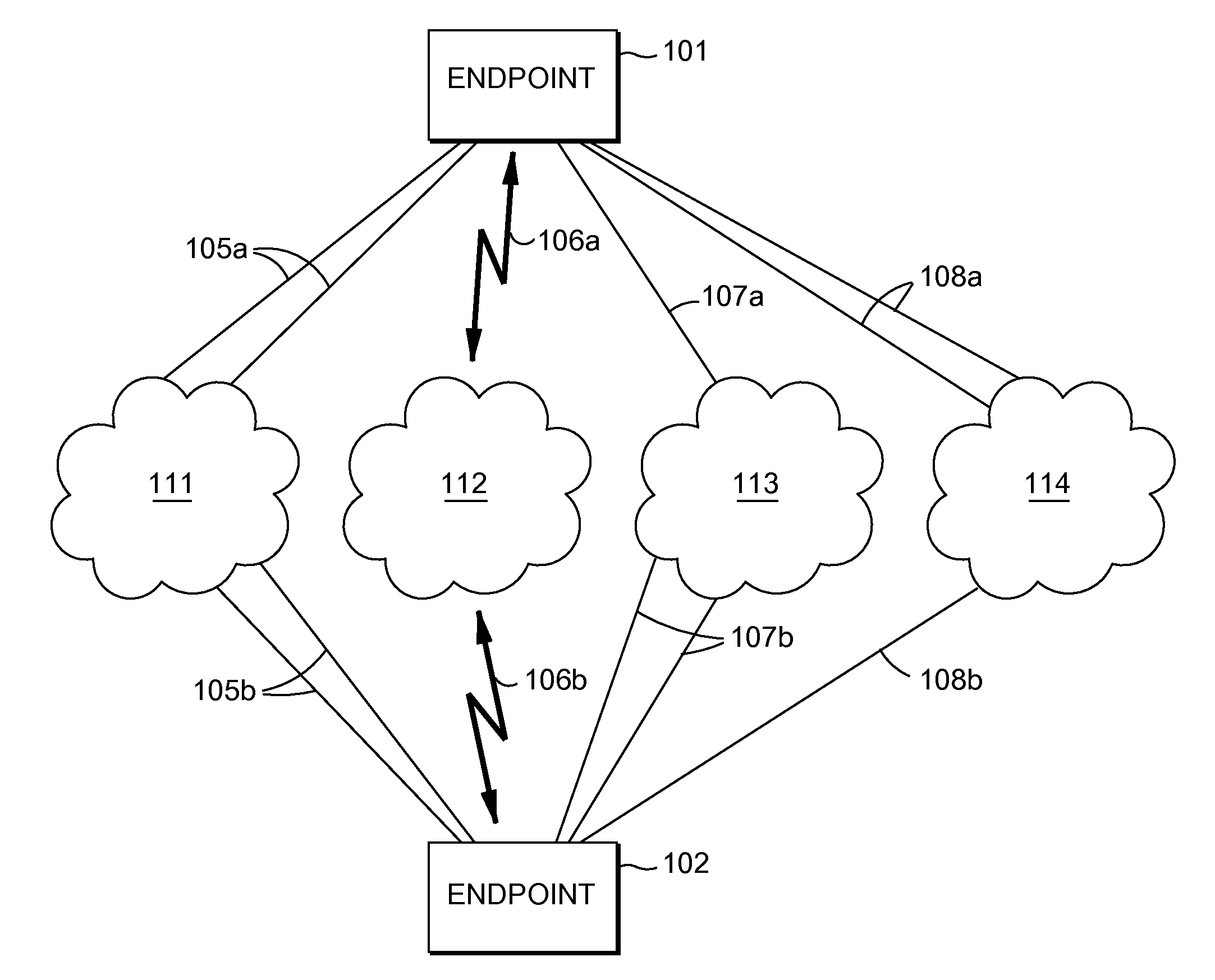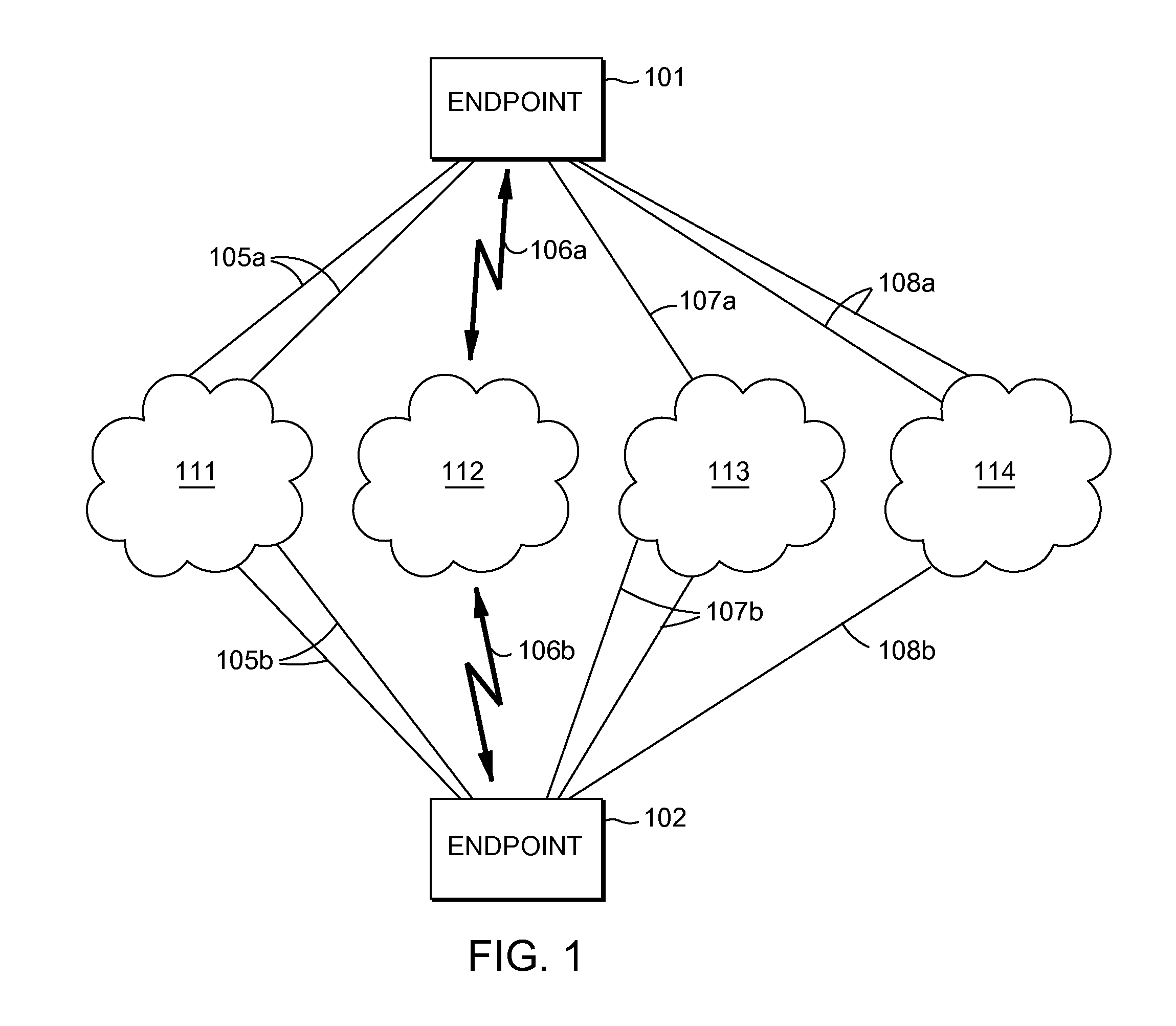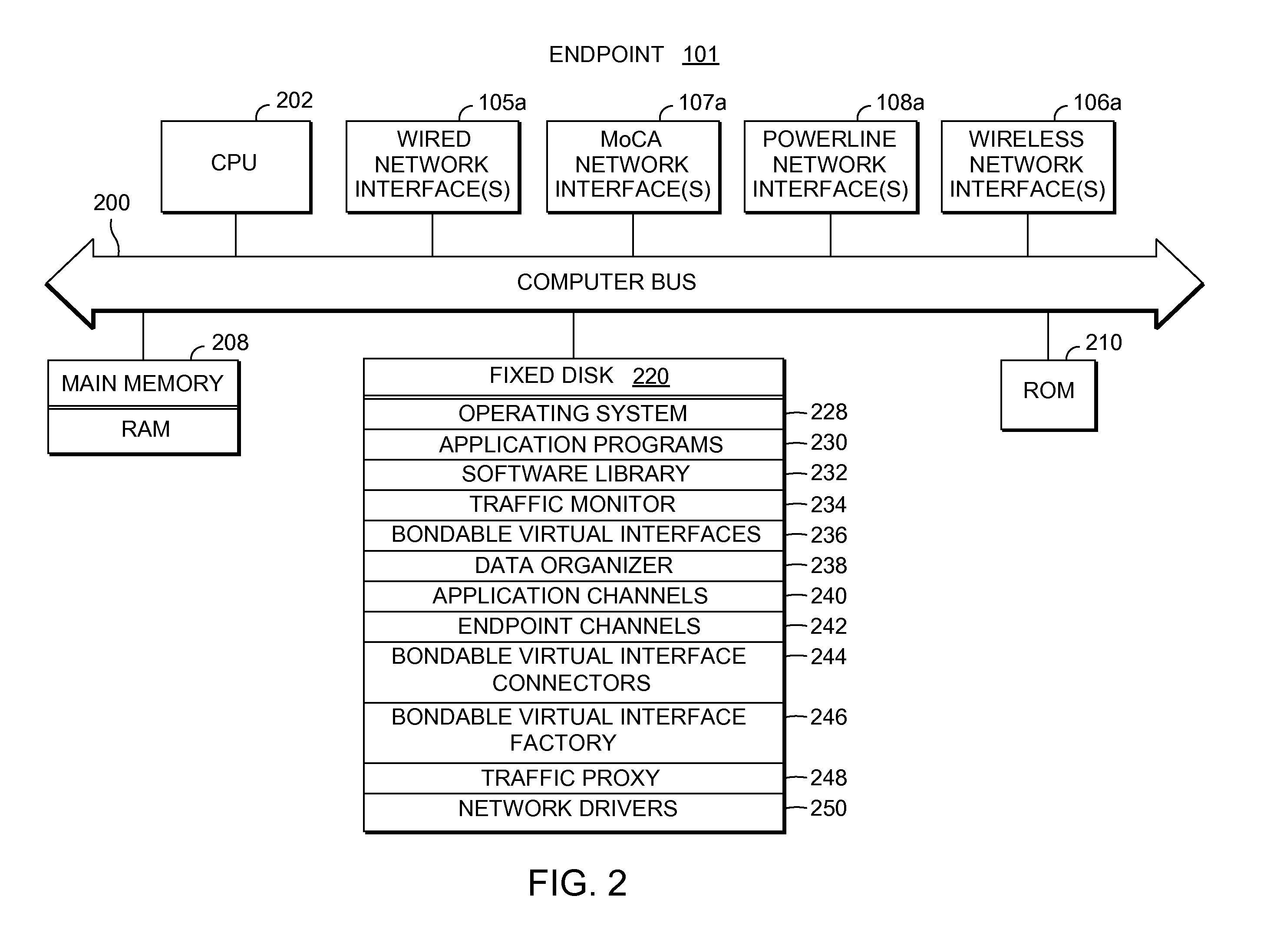Network streaming over multiple physical interfaces
a network and physical interface technology, applied in the field of network streaming, can solve the problems of affecting the delivery quality of streamed data, affecting the quantity of data information that needs to be sent over the network, and data streaming from a sending endpoint to a recipient endpoint may be detrimentally affected,
- Summary
- Abstract
- Description
- Claims
- Application Information
AI Technical Summary
Benefits of technology
Problems solved by technology
Method used
Image
Examples
Embodiment Construction
[0036]FIG. 1 is a representative view of a sending endpoint and a receiving endpoint, connected via one or more networks, on which an architecture of an example embodiment may be implemented. As shown in FIG. 1, sending endpoint 101 is connected to receiving endpoint 102 through networks 111, 112, 113 and 114. The networks may include similar or dissimilar networks, mixed in any combination, as described below. Sending endpoint 101 includes multiple physical interfaces, including at least one or more physical interface for each different network. As shown in the example of FIG. 1, sending endpoint 101 includes physical interfaces 105a, 106a, 107a and 108a. More specifically, sending endpoint 101 has physical interfaces 105a which connect sending endpoint 101 to network 111. In FIG. 1, sending endpoint 101 is shown to have two physical interfaces 105a connecting to network 111; however, in other embodiments, sending endpoint 101 may have a single physical interface connecting to netw...
PUM
 Login to View More
Login to View More Abstract
Description
Claims
Application Information
 Login to View More
Login to View More - R&D
- Intellectual Property
- Life Sciences
- Materials
- Tech Scout
- Unparalleled Data Quality
- Higher Quality Content
- 60% Fewer Hallucinations
Browse by: Latest US Patents, China's latest patents, Technical Efficacy Thesaurus, Application Domain, Technology Topic, Popular Technical Reports.
© 2025 PatSnap. All rights reserved.Legal|Privacy policy|Modern Slavery Act Transparency Statement|Sitemap|About US| Contact US: help@patsnap.com



